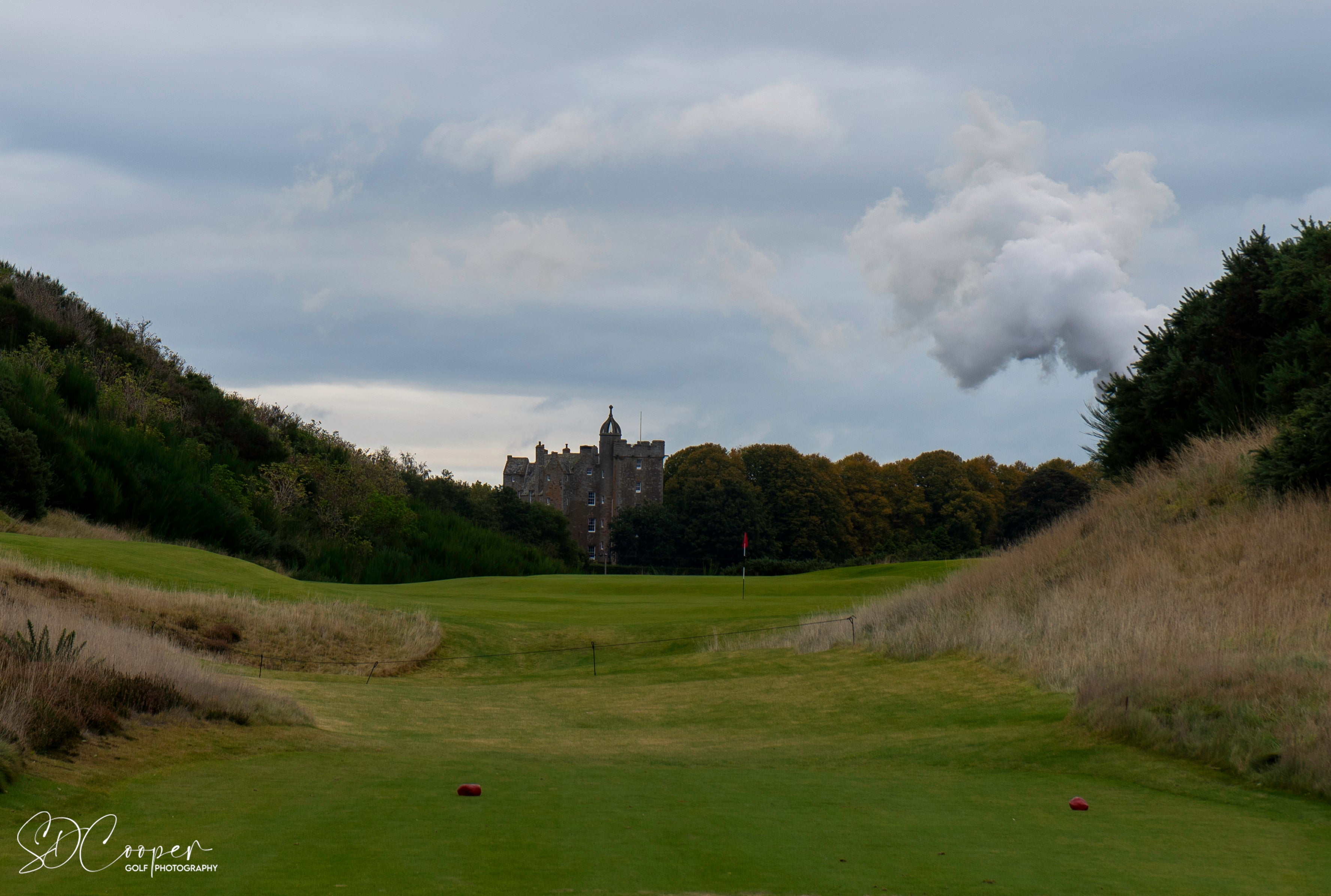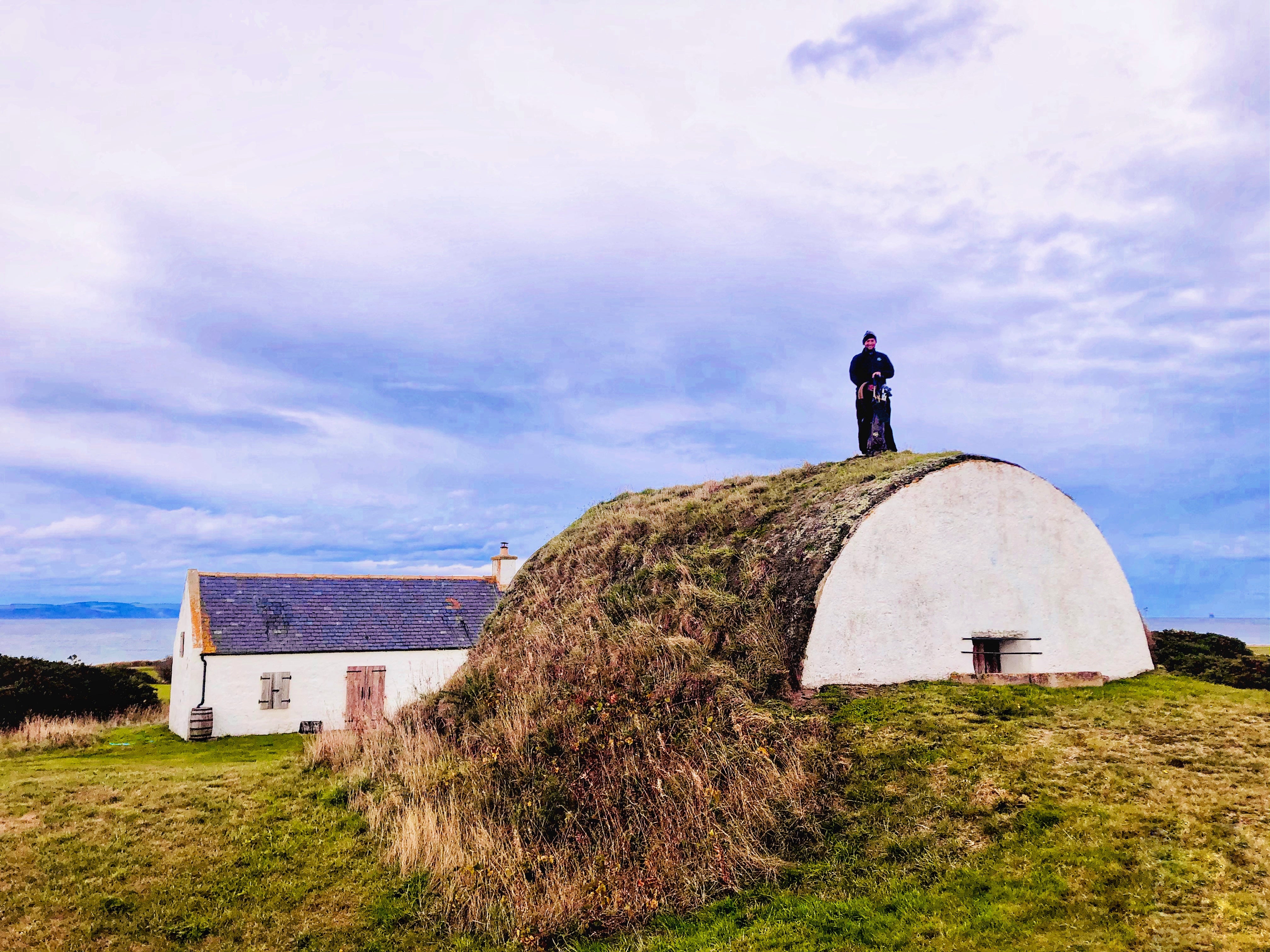
Cᴀsᴛʟᴇ Sᴛᴜᴀʀᴛ Gᴏʟꜰ Lɪɴᴋs
It has been a little while since my last post, but I'm picking up where I left off. From Fortrose and Rosemarkie, the next links we come to is Castle Stuart. This was another I was particularly looking forward to.

A short drive from Inverness, Castle Stuart is draped over the banks of the Moray Firth. Shortly after completing the enormously successful Kingsbarns Links with architect Kyle Phillips, developer Mark Parsinen was ready for his next project.
This time he partnered with Gil Hanse. Today, Hanse is one of the most in demand architects globally. At the time, he was relatively fresh. One of the crop of 'graduates' from Tom Doak's Renaissance Golf Design.
Below - the view from the First tee

They created a course with the attention to detail Mark was famous for. From the art deco clubhouse in the centre of the property, with commanding views out over the Moray Firth, the round begins down by the water's edge. The first couple make for a spectacular start, but it's at the Third is where the real fun starts.

Above - the par 5 Second
Playing between 260-300 yards, it's certainly driveable on paper. With the Firth to the right, most will bail out left. If you do, it's far from a straightforward up and down. Whilst the green is deep, it's only 14 paces wide. True risk/reward golf needs to be tempting enough to go for it - and this will definitely tempt you...

One of the design principles employed at Castle Stuart is the 'compress & release' concept. The idea that you regularly travel to and from the water - heading inland before you become too accustomed to being at the water's edge. The variety and ever changing nature of the landscape is designed to make you appreciate the water more - and it is hard to argue with.
That is not to say the backdrops are dull as you move away from the Firth. The Fourth is a midlength par 3 which points you straight in the direction of the seventeenth century Tower which gives the links its name. The 'original' Castle Stuart was built in 1625 by the 3rd Earl Moray - and belonged to the Stuart family.
As you marvel at the Castle directly behind the green, it is the first time you'll likely appreciate another design strategy utilised by Parsinen and Hanse. Many of the holes are orientated directly towards local landmarks or points of interest. This is another technique which features throughout the round.

Another feature of the design I particularly enjoyed was in the variety and intrigue posed by the bunkering. There is a case to be made that bunkering, especially amongst the Open Rota courses, has lost some variety. Say 'links bunker' to most and its likely a reveted pot bunker that springs to mind. By the time we arrive at the Fifth tee, we have already seen open sand areas, centre lines and marram edged expanses. Here, we see another bunker style that's more of a psychological trick.

It looks like there are three fairway pots all at drive length, staring us down. In reality, they are only in play if you blink. The left hand one is a fraction of the size of the other, but positioned on the crest of a hill - so as to appear further away than it is. The right hand two are more in play on the second shot of this par 5 - but they all feature in your subconscious as you stand over your drive.
I thought the variety of bunkering was a defining feature of this run of holes.

From the equally well bunkered Sixth (above), we are 'released' back to the water. This time, playing the long par 4 Seventh along the cliff top - a 4 will always feel like a good return here.
The Eighth throws another of the interesting design features into sharp relief. This time, the greens. With many of them possessing closely mown surrounds, there is already ample opportunity to take putter from off the green. In general, the greens themselves are large, undulating and incredibly good fun. The boomerang shaped green on this par 3 a perfect example of these eccentric playgrounds.

Nine completes the western loop, back to the centrally located clubhouse. It's another hole where the drive asks you to choose a route. A large area of broken sand and rough lurks around driver length - leaving a narrow route around it to the green. A well placed drive down this channel will yield a blind pitch up the green. However, the safe play is to lay short of the sand - allowing an approach over all the trouble from higher ground.

The Back Nine
After a brief recharge at the halfway house, it's back down to the water's edge to begin the back 9 - this time playing with the water on our left.

The Tenth has bits of broken sand in the rough, but only one 'formal' bunker on the hole. Smack in the middle of the fairway. Playing away from the water to the elevated right hand side of the fairway seems safer, but it's an inferior line in to the green protected only by its rolling contours.
Eleven was my favourite of Castle Stuart's par 3s. At only 135 yards, it points directly towards Chanonry Point Lighthouse on the other side of the Moray Firth (Click here to read my previous review on Fortrose & Rosemarkie). From an elevated tee, the short hole doesn't need to hide any of its secrets. Even on the windiest of days, a route can be safely plotted. From the large area of closely mown grass short right of the green, a two putt par can be achieved by anyone. If pin seeking, be warned - there is a big number lurking. 
Twelve is the hole that felt a little out of place amongst the others. Lined by gorse on both sides, this long par 5 felt slightly more attritional than the others. However, with a well struck drive in play, there's a good chance to 'let loose' with the second and try and chase one up the slope.

The nature of the land form then necessitates a lung busting climb from sea level to the cliff top. Once you've recovered your breath on the Thirteenth tee, you're rewarded with another hole that is pure, unadulterated fun.
A near 90 degree dogleg right, the fairway at the point of the turn is bulbous - before tapering as it nears to the green. Whilst the green is hardly flat, the contours short of it are particularly extreme. It shows the benefit of being able to favour the right hand side off the drive, and be rewarded with a shorter club in. Going left means a longer club in is required - very challenging to run the ball up to the green. If you have managed to hold this infinity green in two, the walk up - with the Kessock Bridge beyond it - is one to savour.

Fourteen is another eccentric green complex. The fairway is wide open, with a centreline bunker asking the question from the tee.

The par 4 Fifteenth meanders through broken sand and dunes. A drive tight down the left hand side of the fairway gives you a good line in to the green, with the further right you are off the tee blocking your line of site behind one of the largest bunkers on the course - complete with a dune face comprising of railway sleepers.

Sixteen utilises a feature I noticed more at Castle Stuart than most other courses - the bunker behind the green. On this short, driveable par 4 - they're probably more of a help than a hazard - as they can save an overzealous shot from careering down the cliff beyond. As shown in the picture below: it may not be a straightforward recovery, but it sure beats a lost ball.

Seventeen is another 'half shot' hole, but this time you are fighting to avoid bogey on this long par 3. Over 200 yards into the prevailing wind, there is still plenty of open space short for those who don't quite have the shot in their arsenal.

The views from the Eighteenth tee are exceptional. The clifftop tee site provides a commanding view over the Moray Firth to all of the landmarks mentioned above, and many more besides. The holes by the water's edge are visible again - and it's an ideal vantage point from which to relive the round.
However, the hard work's not done yet - and the drive demands your full attention. At around 500 yards, it's definitely 'gettable' in two - and perhaps the architects want you to have a pop. Not only is it the largest green on the course, but there are isn't a fairway bunker to be seen.
The second does involve a heroic carry fraught with risk - over broken ground and sand, there is plenty that can go wrong. But who reaches the middle of the eighteenth fairway at Castle Stuart and opts for a safe 7 iron instead?

Conclusion:
I wasn't planning on doing a full hole by hole run through of Castle Stuart. At the time of playing, I enjoyed it immensely - but didn't fully appreciate many of the subtle design features that seemed to reveal themselves on reflection.
In the recent Cookie Jar podcast with Gil Hanse (listen here), he talked about the attention to detail of the late Mark Parsinen - who seemed to be more co-designer than simply client. I am sure you could play the course a dozen times and not pick up on some of the ingenious details. But, they are there. They all add to the enjoyment and the experience - and perhaps that's all they need to do.
Some courses go for the jugular - trying to overwhelm you with awe inspiring dunes, relentless bunkering or holes designed more for the Instagram influencer rather than the golfer. Doak suggests his former apprentice has a "penchant for 'infinity greens' that is bordering on fetish" - but I'm not sure that's the case here. The views are spectacular, but the golf is good in its own right.
For a course so young, it felt like it had a restrained maturity. It's somewhere I'm looking forward to heading back to, where more details and subtleties will be revealed with familiarity.




Leave a comment
This site is protected by hCaptcha and the hCaptcha Privacy Policy and Terms of Service apply.